
2008 International Respiratory Congress Advance Program |
![]()

Important Date
- Oct 31
Discounted registration ends
![]()
Tuesday, December 16
8:30 A.M.–11:20 A.M.
The Annual RESPIRATORY CARE Journal Symposium
How To Read the Respiratory Care Literature
Dean R Hess PhD RRT FAARC
Editor In Chief, RESPIRATORY CARE/Chairing
8:30 A.M.–9:00 A.M.
How to Find the Best Evidence
Robert L Chatburn RRT FAARC, Cleveland OH
This lecture will review methods of identifying the newest and best evidence. Particular attention will be paid to searches in PubMed and Internet search engines such as Google Scholar.
9:05 A.M.–9:35 A.M.
How to Read an Original Research Paper
Charles G Durbin Jr MD FAARC Charlottesville VA
This lecture will describe how to critique an original research paper. Techniques to critique the methods, analysis, and authors’ assessment of the results will be discussed.
9:40 A.M.–10:10 A.M.
How to Read a Case Report
(or Teaching Case of the Month)
David J Pierson MD FAARC, Seattle WA
This lecture will describe how to critique a case study. How to identify the clinical relevance of the case will be discussed.
10:15 A.M.–10:45 A.M.
How to Read a Review Paper
Richard D Branson MSc RRT FAARC, Cincinnati OH
This lecture will describe how to critique a review. Particular attention will be paid to systematic reviews and meta-analysis.
10:50 A.M.–11:20 A.M.
Translating Evidence to Practice
David J Pierson MD FAARC, Seattle WA
Of concern is the lag between the reporting of research findings and incorporation into practice. Barriers to the incorporation into practice will be presented.
8:30 A.M.–9:10 A.M.
The Use of Nitric Oxide in Transport: One More Tank to Take with You
Steven E Sittig RRT-NPS FAARC, Rochester MN
The utilization of nitric oxide therapy has been slowly moving out of the recognized on-label uses for newborns with meconium aspiration syndrome and pulmonary hypertension. There are now reports of nitric oxide being utilized on micro premature infants to adults with ARDS. This expansion in use can lead to technical issues in accurate delivery on transport, efficacy in these new applications, and potential issues in reimbursement. This lecture will cover the main use of nitric oxide therapy in near term and term infants. Then we will review the literature on the expanding use in other patient populations as well as technical challenges in accurate delivery on transport with older patients.
8:30 A.M.–9:15 A.M.
STACS, LTACS, and SNFS—Oh My!
Bill D Cohagen RRT FAARC, Phoenix AZ
This presentation will discuss the commonalities and differences for the respiratory therapist in numerous long term settings. This presenter will also look into the future and discuss the expanding roles of how respiratory therapists may be utilized in future settings.
RESPIRATORY CARE OPEN FORUM #15
Management: We Know Our People—Part 2
9:30 A.M.–11:25 A.M.
- Standardizing Difficult Airway Carts—Phil Genovese RRT, Phoenix AZ
- A Multidisciplinary Solution to Decrease the Length of Stay of the Ventilated Patient—Sally Whitten RRT, Portland ME
- Respiratory Therapy Assess and Treat Protocol Campaign Increases Utilization of Protocols—Anne L Flaten RRT MBA, Madison WI
- Reducing the Rate of Omitted Inhaled Medications by Implementing a New Ordering Process—Rikki S Bruinsma RRT CPFT, Jacksonville FL
- Implementing a Web Based Point-of-Care Tutorial—Elsie M Collado-Koman RRT MBA-HCM, San Diego CA
- Time Study Analysis of Current Respiratory Care Practice on Clinical Nursing Floors—Edward R Hoisington RRT, Cleveland OH
- A Retrospective Review of the Incidence Ratio of Culture Positive BAL Samples to Clostridium difficile Positive Patients in an Urban Trauma Medical Center—Roger W Reichenbach RRT, Detroit MI
- Assessment of Workload Assigned Versus Workload Done Using a Respiratory Care Iformation System—Gina Giles-Oas, San Diego CA
- NVA Edi Catheter Insertion by Respiratory Care Practioners in the Adult Patient Population—Paul D Luehrs RRT BSRT, Springfield MO
- Five Successful Systems to Maintain Ongoing Multi-Site Readiness for the Joint Commission Review—Carol Mihailuk RRT, San Diego CA
- Determining Patient Admission Criteria to a Bronchiolitis Outpatient Clinic (BOC): 3 Seasons in Review—Debbie Forbush RRT, St. George UT
- Low Extubation Times in Cardiac Surgery Patients: Integration of Respiratory Therapy Driven Protocols—Felix Khusid RRT-NPS RPFT, Brooklyn NY
- Outcomes of a Ventilator Management Protocol—Carla Wollens RRT, Cleveland OH
- Infection Control Surveillance Study of the Common Canister Protocol—Douglas S Laher RRT MBA, Cleveland OH
- Attitudes of Respiratory Therapy Program Directors Toward Baccalaureate and Higher Degrees for the Advanced Practitioner Graduates—Arthur B Marshak MS RRT RPFT EdD, Loma Linda CA
- Sustainability of a Quality Improvement Program in Mechanical Ventilation Assessment—Mary E Nash RRT, Boston MA
RESPIRATORY CARE OPEN FORUM® Symposia supported by an unrestricted educational grant from 18 Symposia during the 4 days of the Congress: |
|
| Saturday, #1–4 | Sunday, #5–8 |
| Monday, #9–14 | Tuesday, #15–18 |
8:30 A.M.–9:15 A.M.
Non-Invasive Ventilation
Children: Where Are the Data?
Donna S Hamel RRT FAARC, Durham NC
Unlike the neonatal population, minimal evidence exists to support the use of noninvasive ventilation for children. Despite this lack of data, the use of noninvasive ventilation in the pediatric population continues to increase at a significant rate. The pros and cons of using this technology for children with respiratory failure of various etiologies will be discussed.
8:30 A.M.–10:05 A.M.
Cardiopulmonary Exercise Testing
8:30 A.M.–9:15 A.M.
Why Perform Cardiopulmonary Exercise Tests
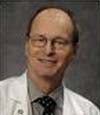
Gregg Ruppel
Gregg L Ruppel MEd RRT RPFT FAARC
St Louis OH
Cardiopulmonary exercise testing may yield valuable clinical information that is not obtained during standard cardiac stress testing. Learn how the addition of this test can improve your lab’s diagnostic capability.
9:20 A.M.–10:05 A.M.
Case Studies in Cardiopulmonary Exercise Testing
Marshall B Dunning III PhD MS RPFT, Milwaukee WI
The clinical utility of cardiopulmonary exercise testing will be demonstrated in a case study format.
8:30 A.M.–10:10 A.M.
Advance Practice in Respiratory Care—We Can Do More
8:30 A.M.–9:00 A.M.
Central Line Placement Utilizing Ultrasound
Amy Bardin RRT, Phoenix AZ
Specialized training of respiratory therapists for advanced practices has enabled clinicians to aid in point-of-care invasive procedures. Such advanced practices include: bedside insertion of peripherally inserted central catheters and central venous catheters. Utilizing portable ultrasound for direct vessel visualization enhances this bedside practice.
9:05 A.M.–9:35 A.M.
Procedural Sedation by Non-Anesthesia Personnel
Darnetta Clinkscale MBA RRT, St Louis MO
This presentation will detail the process of establishing policies, procedures and competencies that enable our respiratory therapist to administer sedation during special procedures. Emphasis will be placed on therapist responsibilities in ensuring patient safety before, during, and after the procedure.
9:40 A.M.–10:10 A.M.
The Growing Role for Respiratory Therapy Services in Critical Access Hospitals
Michael Ford RRT NHA, Afton WY
This presenter will illuminate new avenues for service and demonstrate successful complex programs in the rural setting. This presenter will further highlight customer service opportunities common to urban settings in the critical care hospital environment.
8:30 A.M.–10:55 A.M.
Oxygen Therapy: What is the Evidence?
8:30 A.M.–9:15 A.M.
Oxygen Therapy: The Available Evidence
Brian W Carlin MD FAARC, Pittsburgh PA
At the completion of this session, the learner will become familiar with the current evidence supporting the use of oxygen therapy for patients with chronic lung disease.
9:20 A.M.–10:05 A.M.
Oxygen Therapy: Delivery Devices—The Evidence

Robert McCoy
Robert W McCoy RRT FAARC
Apple Valley MN
At the completion of this session, the learner will gain knowledge of the evidence supporting the use of various types of oxygen delivery devices.
10:10 A.M.–10:55 A.M.
Oxygen Therapy: What is the Future?
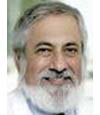
Richard Casaburi
Richard M Casaburi MD PhD
Torrance CA
At the completion of this session, the learner will gain knowledge of the future trials designed to evaluate the use of oxygen therapy.
RESPIRATORY CARE OPEN FORUM #16
Respiratory Care Potpourri
9:30 A.M.–11:25 A.M.
- Effect of the Rapid Response Team on Respiratory and Cardiopulmonary Arrests Within Non-Critical Care Units—Scott Richey RRT, Hampton VA
- Sensitivity and Specificity of Overnight Pulse Oximetry as Compared to Limited Sleep Study in the Diagnosis of Sleep Apnoea Syndrome (SAS) (an Irish Perspective)—Asaad akbar Khan MRCPI, Galway Ireland
- Predictors of Obstructive Sleep Apnea - Results From a Retrospective Cohort Study—Timothy J Albright RRT BRT, Philadelphia PA
- Home Smoking Policies in Low Income, Minority Patients—Michael E Anders PhD RRT, Little Rock AR
- Evaluation of Expiratory Muscle Activation Patterns in Individuals With Spinal Cord Injury—Alexander V Ovechkin MD PhD, Louisville KY
- Evaluation of Health Care Practitioners Assessing Breathing Patterns—Yoshihiro Uzawa RRT CPFT RRT-NPS MS RPT, Kamogawa Chiba Japan
- Effect of Mask Type, Oxygen Concentration, and Flow Rate on Both Exhaled CO2 and Respiratory Frequency Measurement by Capnograph—Paul F Nuccio RRT FAARC, Boston MA
- Utilizing the BODE Index as an Indicator for Pulmonary Rehabilitation Referral—Ann Hart MS RRT, Magnolia DE
- Survey on Clinical Practice of Apnea Brain Death Assessment—J Brady Scott RRT, Durham NC
- The Extent of Pulmonary Rehabilitation Program Modifications to Accommodate Patients With Restrictive Lung Disease—Phillip D Hoberty RRT, Columbus OH
- Patient Satisfaction With Self-Applied Home Sleep Testing—Greg Spratt RRT CPFT, Philadelphia MO
- A Five Year Retrospective Quality of Life Analysis of Patients With Interstitial Lung Disease Attending a Comprehensive Pulmonary Rehabilitation Program, 2003-2007—Susan Farrell RRT CPFT AE-C ACSM, Falls Church VA
- Implementation of the 2005 Cardiopulmonary Resuscitation Guidelines and Use of an Impedance Threshold Device Improve Survival From Inhospital Cardiac Arrest—Ken Thigpen RRT, Jackson MS
- Decreasing Admission Wait Time for Patients With Chronic Obstructive Pulmonary Disease (COPD) Who Are Referred to an Outpatient Pulmonary Rehabilitation Program—Sandra Hooper RRT, St. Louis MO
- The Impact of Students (CRT) on a Bronchiolitis Outpatient Clinic (BOC)—Scott Daniel RRT, St. George UT
- Evaluation of Manual Ventilation Practices Using the T-Piece Resuscitator—Kathleen Deakins RRT-NPS, Cleveland OH
- Creating an In-House ECPR Program—Susan A Roark RRT-NPS, Atlanta GA
8:30 A.M.–11:30 A.M.
Sleep Symposium
8:30 A.M.–9:10 A.M.
Fatigue Management
Phillip D Slocum RRT RPSGT CPFT, Miami FL
Our world has evolved into a 24-hour society. This has caused fatigue and made us more susceptible to errors and accidents both on and off the job. Principles applied for reducing fatigue related errors in other industries are applicable to healthcare.
9:15 A.M.–10:05 A.M.
The Use of Positive Airway Pressure in Sleep Disordered Breathing
David F Wolfe MSEd RRT RPSGT AE-C, Syracuse NY
This presentation will cover the recent advances and different applications in the use of positive airway pressure (PAP) to treat sleep disordered breathing. Auto adjusting CPAP, fixed CPAP, bi-level ventilation, and servo ventilation will be discussed and compared.
10:10 A.M.–10:50 A.M.
Home Sleep Testing
Timothy W Buckley RRT FAARC, Deerfield IL
Medicare has recently changed regulations allowing unattended home studies to be used in the diagnosis of sleep apnea. This presentation will describe these new regulations, technologies and tips for good home testing.
10:55 A.M.–11:30 A.M.
The Use of a Sleep Data Base System to Monitor and Modify Therapy
Robert W McCoy RRT FAARC, Apple Valley MN
Sleep therapy is one of the fastest growing areas in home care. New products and procedures are entering the home with little research to determine the effectiveness and value of this therapy. To understand the trends in sleep therapy, a large database of information is needed.
9:20 A.M.–10:00 A.M.
Difficult Airway Management in Neonatal and Pediatrics Population: A Case-Based Approach
Steven E Sittig RRT-NPS FAARC, Rochester MN
The presentation will address issues with the difficult airway enountered in the neonatal and pediatric population, illustrated with several case presentations that are ICU/transport based. The presenter will provide a review of the current literature with respect to the identification of the difficult airway as well as discuss alternative airway techniques/devices to employ in the successful management of this patient population.
9:35 A.M.–10:15 A.M.
Using Simulation Technology to Improve Staff Critical Thinking Skills
Kay Martin RRT-NPS, Dallas TX
This lecture will discuss the use of high fidelity simulation mannequins to improve critical thinking skills with your staff. The presenter will address the experience and results of the Children’s Medical Center of Dallas using the Sim Baby to train on Mock Codes within the hospital.
10:10 A.M.–11:45 A.M.
Neonatal Ventilation
10:10 A.M.–10:55 A.M.
Neonatal Ventilators: How Do They Differ?
Steven M Donn MD, Ann Arbor MI
Neonates pose unique challenges when it comes to mechanical ventilation. This presentation will review the specialized aspects of this population from pathophysiologic and technical perspectives. Recent accomplishments as well as potential future advances will be discussed.
11:00 A.M.–11:45 A.M.
Monitoring the Efficiency of Gas Exchange
Donna S Hamel RRT FAARC, Durham NC
Neonates also pose unique challenges when it comes to monitoring mechanical ventilation. Frequent blood gas analysis is avoided when possible to minimize the need for transfusions. Pheumotachometers may introduce excessive dead space into the ventilatory circuit. Transcutaneous monitoring may injure the delicate skin of a pre-term infant. This presentation will review recent technological advances in the fields of capnograpny and transcutaneous monitoring. Speculation for potential future breakthroughs will be offered.
10:15 A.M.–11:40 A.M.
Surf’s Up! Disaster Planning
10:15 A.M.–10:55 A.M.
Surf’s Up! Disaster Planning
When therapists think of emergency preparedness, they often think of the equipment that will be needed to treat victims with respiratory compromise. However, a well-rounded emergency preparedness plan must address staff education and preparedness both at home and at work, as well as programs to provide support to staff and their families during the crisis. Additionally, surge capacity plans must be developed to address equipment, supplies, and extended staffing needs for potential long-term or overwhelming disaster situations. We will discuss some of the plans that are underway at our facility to prepare our hospital and staff for whatever disaster situation presents itself.
11:00 A.M.–11:40 A.M.
Critical Utilities Outage–Planning and Preparation to Avoid Catastrophe
Piped oxygen in a hospital is considered a critical utility and any interruption of this critical service puts patients at increased risk for poor outcomes. This presentation will examine the multidisciplinary process we have developed to prepare for planned piped oxygen outages, the lessons we’ve learned through three major hospital-wide shutdowns, and how we’ve applied our knowledge to improve patient safety and staff satisfaction during these critical shutdowns.
RESPIRATORY CARE OPEN FORUM #17
Babies & Kids: We Can Tell The Difference—Part 2
1:00 P.M.–2:55 P.M.
Clinicians present the results of their scientific studies. Abstracts with a similar focus are clustered into a symposium to encourage discussions and interactions among investigators and observers; posters expand the information presented.
- An Analysis of Culture Change in the NICU With Implementing Potentially Better Practices: Breaking the Staff’s Addiction to Oxygen—Shayne Morris RRT-NPA MBA, Orlando FL
- Mortality Risk Associated With Re-Intubation in Preterm Infants Treated With Different Surfactants—Carlos Guardia MD, Warrington PA
- Use of High Fidelity Simulation Education Reduces Cardiac Arrests Outside the PICU by 70 Percent Since Inception at Children’s Medical Center—Aleta K Martin RRT-NPS, Dallas TX
- Respiratory Therapist Participation in Multidisciplinary Simulation Training—Patricia A Achuff RRT-NPS MBA, Philadelphia PA
- Early Impact on the MDI Titration Protocol for Critically Ill Pediatric Patients—Darcy O’Brien-Genrich RRT MPA, Omaha NE
- Comparison of Two Temperatures for Transcutaneous PCO2 Monitoring in Neonates—Brandon Kuehne RRT-NPS RPFT, Columbus OH
- Delay in Surfactant Delivery Has No Relation to the Duration of Neonatal Intensive Care Unit (NICU) Stay—Elissa E Kim, Willoughby OH
- Increased Circuit Pressures With a High Flow Nasal Cannula System—Jenni Raake RRT-NPS, Cincinnati OH
- The Effects of Using a Blended Gas Source for Manual Ventilation With a Nitric Oxide Delivery System—John T Gallagher RRT-NPS, Cleveland OH
- Role of Noninvasive Positive Pressure Ventilation in Preventing Extubation Failure in the Pediatric Critical Care Setting—Gustavo Olguin CRT PT, Buenos Aires Argentina
- A Novel Device Using Bubbles to Provide Non-Invasive Support to Infants With Respiratory Failure—Rob DiBlasi RRT-NPS, Seattle WA
- The Imposed Work of Breathing and Mechanical Deadspace of Various Circuit Configurations for Infants Supported With Continuous Positive Airway Pressure (CPAP)—Leslee Hill RRT, Seattle WA
- Monitoring the SPO2 Variability of Neonates Susceptible to Retinopathy of Prematurity Using a Modified Pulse Oximetry Data Collection System—Michael Davis RRT, Charlottesville VA
- Effects of Imposed Resistance on Tidal Volume With Five Neonatal Nasal Continuous Positive Airway Pressure Systems—Shannon Cook, Cleveland OH
10:15 A.M.–11:55 A.M.
Clinical Pearls in Diagnostic Testing
10:15 A.M.–10:45 A.M.
Exhaled Nitric Oxide and Other Exhaled Markers
Carl D Mottram RRT RPFT FAARC, Rochester MN
You have heard about exhaled NO and exhaled condensate. Now understand the clinical utility of these measurements with case presentation.
10:50 A.M.–11:20 A.M.
Impulse Oscillometry
Marshall B Dunning III PhD MS RPFT, Milwaukee WI
Impulse oscillometric measurements may allow testing in subjects that can’t perform spirometry. Case presentations will demonstrate the usefulness of this measurement.
11:25 A.M.–11:55 A.M.
Indirect Calorimetry
Charles McArthur RRT RPFT, Mankato MN
Indirect calorimetry may be a valuable measurement in a variety of settings; case presentations illustrate the applications of this measurement.
10:20 A.M.–12:15 P.M.
Patient and Family Focused Care
10:20 A.M.–10:55 A.M.
Patient and Family Focused Care
Donna S Hamel RRT RCP FAARC, Durham NC
Participants will be provided with an understanding of the potential conflicts arising when families are faced with a critical situation involving a loved one. The participant will also be provided with the skills specific to dealing with the difficult family. Those who attend will gain knowledge of areas in which conflict is highly likely.
11:00 A.M.–11:35 A.M.
Building a Rapport with Your Patients
Karen S Schell RRT-NPS RPFT
RPSGT AE-C CTTS, Emporia KS
Creating a human connection with each patient is a must. The participant will learn different ways to maintain professionalism with patients and family members, while building trust and sharing your individual personality.
11:40 A.M.–12:15 P.M.
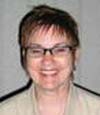
Karen Schell
Make Customer Service Your Passion!
Karen S Schell RRT-NPS RPFT
RPSGT AE-C CTTS
By attending this lecture you will receive an overview of a program that explains how to get your community involved in the services you provide. This presentation will highlight improvements that can be accomplished in your department that will have patients coming back for more.
11:30 A.M. - 12:00 noon
Long-Term Care Section Membership Meeting
Gene Gantt RRT/Chairing
Section members meet to determine their needs and priorities, as well as how to use the AARC resources to accomplish them. All Congress attendees are invited.
11:35 A.M.–12:15 P.M.
Sleep Section Membership Meeting
Karen Y Allen CRT RPSGT/Chairing
Section members meet to determine their needs and priorities, as well as how to use the AARC resources to accomplish them. All Congress attendees are invited.
12:00 noon–12:30 P.M.
Diagnostics Section Membership Meeting
Charles McArthur RRT RPFT/Chairing
Section members meet to determine their needs and priorities, as well as how to use the AARC resources to accomplish them. All Congress attendees are invited.
1:00 P.M.–1:40 P.M.
Pediatric Mechanical Ventilation
Selecting Appropriate Airway Clearance Techniques
Kathleen M Deakins RRT-NPS, Cleveland OH
What are the optimal airway clearance techniques for infants and children? Which techniques can be used for the intubated patient? Are there data to support these approaches or just clinical experience? This presentation will attempt to answer these difficult questions and provide a rational approach for this clinical problem.
1:00 P.M.–1:45 P.M.
Agencies Updates
Toni Rodriguez EdD RRT—AARC President
Michael T Amato—ARCF Chair
Shelley C Mishoe PhD RRT FAARC—CoARC Chair
Sherry L Barnhart RRT-NPS FAARC—NBRC President
The leadership of the professional association, philanthropic organization, education accreditation agency, and certification agency discuss the issues facing respiratory care today and in the future.
RESPIRATORY CARE OPEN FORUM #18
Ventilators & Ventilatory Techniques—Part 4
1:00 P.M.–2:55 P.M.
- Measurement of Respiratory Mechanics by ICU Ventilators—Daniel W Chipman RRT, Boston MA
- Is Nasal Intermittent Positive Pressure Ventilation (NIPPV) a Misnomer?—Mitchell Goldstein MD, Loma Linda CA
- Comparison of Airway Resistance Calculations During Mechanical Ventilation of a Test Lung Model Utilizing Two Different Inspiratory Flow Profiles—Lindsey Rash RRT-NPS, Wilmington DE
- Mid-Frequency Ventilation: Optimum Settings for ARDS—Robert L Chatburn RRT-NPS FAARC, Cleveland Heights OH
- An Observational Study of Displayed Inspiratory Pressure With and Without Tube Compensation While Using Adaptive Support Ventilation—Timothy France RRT, Norfolk VA
- Accuracy of Displayed VT After Installation of New Zero Flow Calibration Procedure for the Avea Hot-Wire Sensor—Dave N Crotwell RRT-NPS, Seattle WA
- Can a Differential Pressure Flow Transducer Accurately Trend Tidal Volume Delivery During High Frequency Oscillatory Ventilation in an Adult Bench Model of ARDS?—Joseph A Ciarlo RRT-NPS, Newark DE
- Increasing Pressure Amplitude on the Viasys 3100B High Frequency Oscillator Does Not Always Result in Increased Tidal Volume Delivery—David H Horney RRT-NPS, Wilmington DE
- Work of Breathing in Adaptive Pressure Control Ventilation: a Comparison of 5 Mechanical Ventilators— Eduardo Mireles-Cabodevila MD, Cleveland OH
- Operating Characteristics of a Novel Small Form Factor Pneumatic High Frequency Ventilator (HFV)—Mitchell Goldstein MD, Loma Linda CA
- A Comparison of Tidal Volume Delivered via the 3100B High Frequency Oscillator Using Two Evidenced Based Approaches to Ventilation Management—Tom Blackson RRT, Newark DE
- Usefulness of Disposable Manometer for the Negative Inspiratory Force (NIF) Measurement During Weaning Readiness Assessment in Cancer Patients—Quan M Nguyen RRT, Houston TX
- Urinary Oxygen Tension (PuO2 ) as a Tool for the Assessment of Renal Function in Critically Ill Cancer Patients Receiving Mechanical Ventilation: a Case Series—Laura G Withers RRT MBA, Houston TX
- Accuracy of New Generation Oxygen Blenders at Low FIO2 —Roy Ramirez RRT-NPS RPFT, Orange CA
- Airway Pressure Release Ventilation in Burns: What Does the Mode Matter?—Griselda G Garcia CRT, New York NY
- A Nation-Wide Chronological, Statistical and Epidemiological Study of HMV in Japan—Toshihiko Agata PhD, Minato-ku, Tokyo, Japan
1:00 P.M.–2:35 P.M.
High Tech/High Touch
1:00 P.M.–1:45 P.M.
Use of Human Patient Simulation in the Respiratory Classroom
James Holland MSN RN RRT RCP, Quitman GA
The presentation will present ways that human patient simulation has been used to teach respiratory content. Emphasis will be placed helping students become familiar with patients, disease, interaction with patients and families, and respiratory care modalities. Additionally, the presentation will focus on advantages and disadvantages of the technology. It will conclude with questions, answers and discussions.
1:50 P.M.–2:35 P.M.
Exploring and Coping with the Human Side of Healthcare
William A French MA RRT, Kirtland OH
Modern healthcare is almost exclusively based on science. While this is good because it provides an objective foundation for our practice, when all the science is stripped away, we are left with human beings helping other human beings in a crisis. Often all this science is used as a shield to deflect the human emotions that accompany our practice. But shields eventually weaken, and without knowledge and an acceptance of humanity, we can become overwhelmed almost to paralysis. This presentation will explore the human side of healthcare delivery and provide the audience with possible coping strategies to use when the emotions start to break through and (perhaps unconsciously) begin to affect what we do.
1:00 P.M.–2:35 P.M.
Smoking Intervention: What Can You Do?
1:00 P.M.–1:45 P.M.
Pharmacological Intervention for Addiction
Jonathan B Waugh PhD RRT, Birmingham AL
The persistence of tobacco use despite well documented awareness of adverse health effects may be attributed to addiction. Attempts to quit smoking are generally unsuccessful without some form of assistance. Many therapeutic options are available to relieve withdrawal symptoms and promote eliminating smoking.
1:50 P.M.–2:35 P.M.
The Role of Respiratory Therapists in Tobacco Use Prevention: Controlling the Most Preventable Form of Cancer
Lynda T Goodfellow EdD RRT FAARC, Atlanta GA
Review of the role and expertise of respiratory therapists in reducing the number of Americans exposed to the harmful effects of tobacco. A respiratory therapist can be involved with decreasing the number of smokers, reducing second-hand smoke, and enhancing infrastructure and resources for reducing tobacco exposure. These strategies may help to reduce the only form of cancer (Lung Cancer) that is not decreasing in the United States.
1:00 P.M.–3:15 P.M.
Mechanical Ventilation in Austere Environments—Does it Matter in Our Daily Practice?
1:00 P.M.–1:30 P.M.
Mechanical Ventilation at Altitude
Richard D Branson MS RRT FAARC, Cincinnati OH
What’s up? Mechanical ventilation at altitude provides significant challenges for both caregivers and devices. Technical considerations must be carefully evaluated when your patient is high in the sky.
1:35 P.M.–2:05 P.M.
Mechanical Ventilation at Depth
George Beck RRT FAARC, West Caldwell NJ
Dive! Dive! Dive! What to do when your patient needs to dive deep? Patient and equipment preparation are a must before leaving sea level.
2:10 P.M.–2:40 P.M.
Mechanical Ventilation on the Battlefield
Dario Rodriquez Jr. SMSgt, Cincinnati OH
Think you work in a pressure-filled environment? Nothing compares to mechanical ventilation on the battlefield.
2:45 P.M.–3:15 P.M.
Mechanical Ventilation in Space
George Beck RRT FAARC
Blast off! What does this button do? Space may be the final frontier for mechanical ventilation. This lecture will describe some out-of-this world settings.
1:00 P.M.–5:00 P.M.
Leadership Institute
1:00 P.M.–1:30 P.M.
Leadership Challenges of Dealing with Generational Differences in the Workforce
Anna W Parkman PhD MBA RRT, Columbus OH
Participants will better understand the impact of having four distinct generations in the workforce as well as strategies on how to best avoid the pitfalls associated with them.
1:35 P.M.–2:05 P.M.
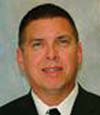
Ken Thigpen
Coaching for Improved Performance
Ken Thigpen RRT, Jackson MS
Presenter will detail how frequent coaching conversations can impact overall performance, and value of employees.
2:10 P.M.–2:40 P.M.
The Imposter Phenomenon
Anna W Parkman PhD MBA RRT
Presenter will explain the imposter phenomenon; how to recognize it and plans of action to address it when identified.
2:45 P.M.–3:15 P.M.

George Gaebler
The Five Dysfunctions of a Team—Another Look
George W Gaebler MSEd RRT
FAARC, Syracuse NY
Participants will understand the dysfunctions commonly associated with most teams and strategies as to how best to minimize the fallout associated with them.
3:20 P.M.–3:50 P.M.
Talent Management In Search of the Sweet Spot
Ken Thigpen RRT
How best to match job responsibilities with talents and demonstrate the impact of when talent and responsibilities are properly matched.
3:55 P.M.–4:25 P.M.
Making a Good Connection Between Electronic Health Records and Quality Care
Susan Rinaldo-Gallo RRT MEd, Raleigh NC
The electronic health record is essential to enable healthcare facilities meet mandates for quality measures, accreditation organizations, and consumers. Presenter will encourage implementation and explain how this approach will improve healthcare.
4:30 P.M.–5:00 P.M.
Demonstrating and Communicating the Value of the Respiratory Therapist
Garry W Kauffman MPA RRT FACHE FAARC, Lancaster PA
Presenter will share insights methods, the importance of measuring, and effectively demonstrating the value of the respiratory therapist to hospital administrators, physicians, and the public at large.
2:40 P.M.–3:25 P.M.
The Ethics of Withdrawal of Life Support—How We Can Do It in a Clear and Meaningful Way
Mary Ann Couture MS RRT-NPS, South Glastonbury CT
Did you ever feel uncomfortable with withdrawing life support from a patient? The goal is not to feel that it is wrong, but to help us carry out our actions with a clearer and more consistent experience. The interactive session shows us how to create a personal ethic to follow orders with a clear conscience and when to recognize pitfalls. Two case studies will be presented.
2:55 P.M.–4:00 P.M.
From Hospital to Home—Successful Transition for the Ventilator-Assisted Patient
Joseph S Lewarski RRT, Wickliffe OH and
Sherry L Barnhart RRT-NPS FAARC, Cabot AR
Advances in medical care have now made it possible for ventilator-dependent patients to be cared for in their own homes. This presentation will discuss the essential components of a discharge plan for a ventilator-assisted patient. Barriers to a successful transition to home and strategies to address them will be identified. The presentation will also explore the respiratory therapists’ essential role in both the sending and receiving aspects of this process.
3:20 P.M.–4:55 P.M.
Staff and Student Development
3:20 P.M.–4:05 P.M.
Blended Learning
Jerry R Edens MEd RRT
Cincinnati OH
In an effort to maximize training resources and use staff time effectively, we are coupling live and Web training as a means of meeting our organization’s training needs. The process of blended learning is the completion of Web training, followed by verification of skills in hands-on sessions with subject-matter experts. This provides an opportunity for staff to learn at their own pace and provides flexibility in obtaining consistent information from the same source.
4:10 P.M.–4:55 P.M.
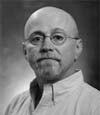
Jerry Edens
Education Planning Process
Jerry R Edens MEd RRT
The presenter will address utilizing goals, needs assessment, objectives, methods, and evaluation to achieve effective clinical instruction. The presenter will discuss how to employ the above tactics to improve the clinical experiences for both students and new employees.